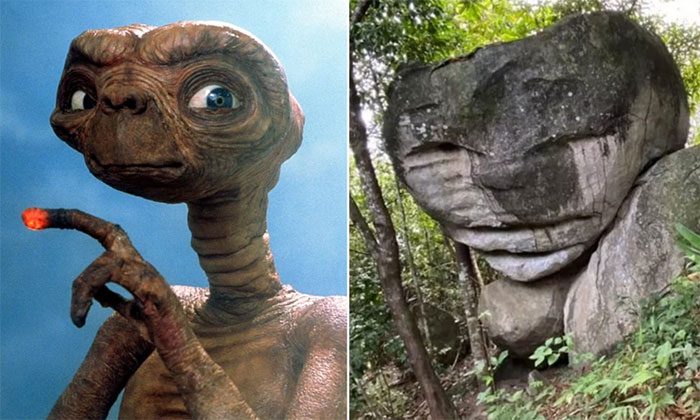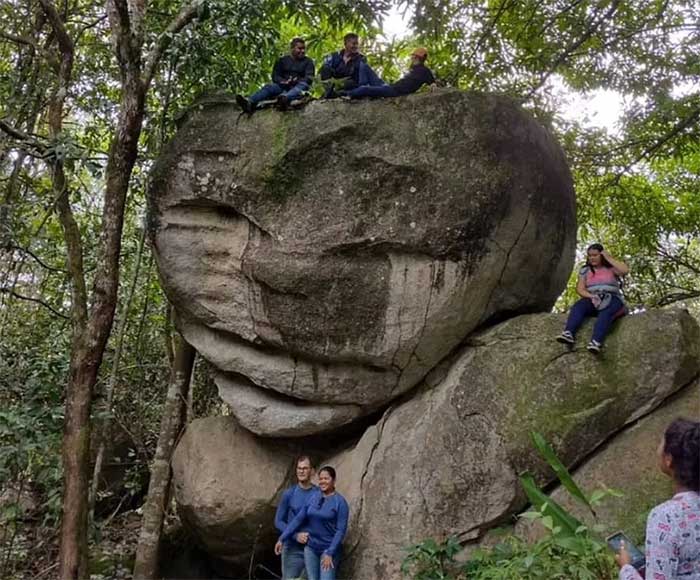The large rock is located on a remote farm in Roraima, Brazil. Miguel Barreto, the farm’s owner, discovered the rock after a major fire in 2002.
The giant rock unexpectedly gained local fame and has increasingly spread in popularity due to its features that many describe as resembling an alien.

The rock has features that many describe as resembling an alien.
The rock has been recognized by the São Luiz tourism and environment department in Brazil as a natural landscape. Many curious tourists flock to see the famous strange rock and pose for photos.
Standing over 6 meters tall, with numerous cracks and irregularities, the rock resembles the face of an alien from the classic 1980s film directed by Stephen Spielberg.
The film revolves around a young boy from California who befriends a kind, intelligent alien who helps him leave Earth for the first time aboard a spaceship. The movie grossed $792.9 million at the box office, a remarkable figure at the time.

Tourists flock to Miguel Barreto’s farm to take photos next to the strange rock.
The fire nearly destroyed Miguel Barreto’s entire farm in 2002 and spread to the surrounding area of trees and vegetation.
He stated: “At first, I didn’t pay attention to the rock; I was focused on repairing the damage from the fire. Later, when I looked back, I realized the shape of the rock closely resembled the aliens in famous movies.”
Since then, Miguel Barreto’s rock has attracted the attention of many locals and has spread throughout the surrounding area.
Today, this site has become one of the attractions for local and international tourists alike.
Visitors come to the farm to see the oddly shaped rock up close. There is no fee for visiting the farm.
The rock is so famous that it is said if you visit São Luiz without seeing the rock, it means you haven’t truly visited São Luiz.
Fábio Wankler, a sedimentary geologist at the Federal University of Roraima, noted that the shape of the rock is a result of erosion. Some of the rock’s features are similar to those found in the mountain ranges in northern and southern Roraima.





















































